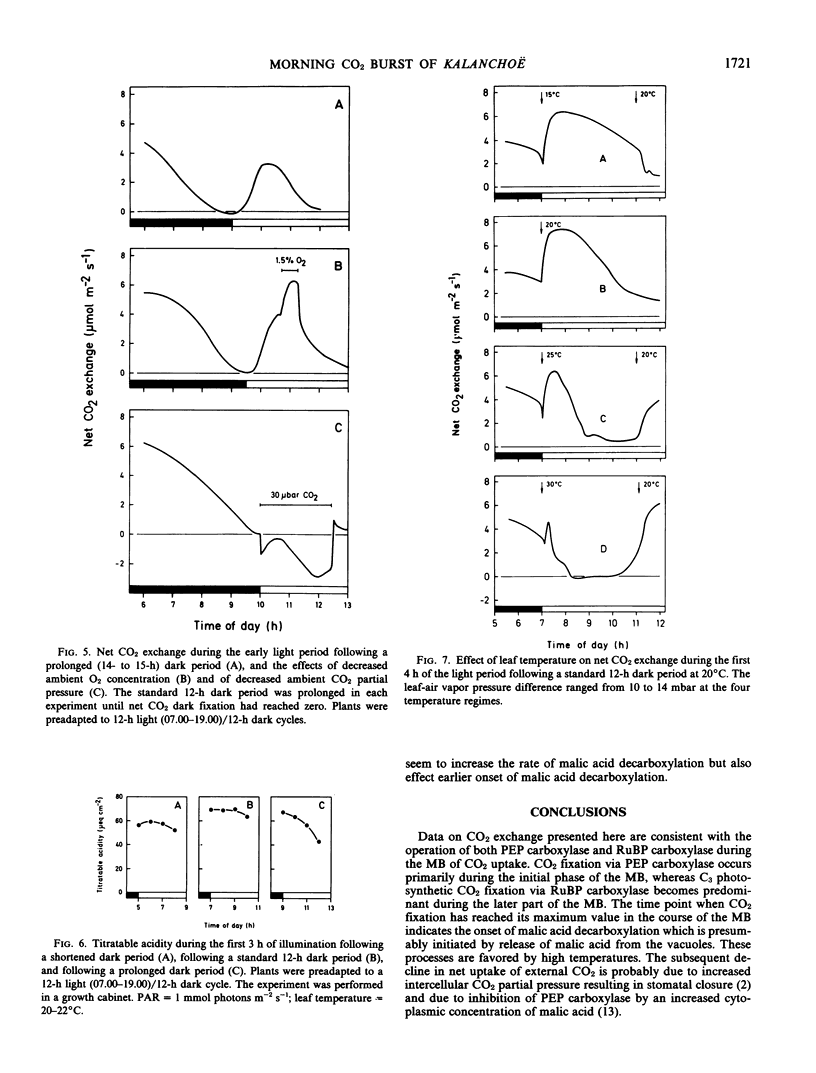Abstract
CO2 exchange characteristics were studied during the light-stimulated burst of CO2 uptake (MB) immediately following a period of nocturnal CO2 fixation in the Crassulacean acid metabolism plant Kalanchoë daigremontiana. During the early parts of the MB, stimulation of net CO2 uptake by low ambient O2 concentration (1.5%) was small, and leaves showed the capacity for net CO2 uptake at low ambient CO2 partial pressure (30 microbars) and when the MB was interrupted by darkness. During the later phase of the MB, stimulation of net CO2 uptake by 1.5% O2 was increased, and net CO2 loss was recorded both at 30 microbars CO2 and during dark interruptions. These results suggest that CO2 fixation during the MB occurs simultaneously via phosphoenolpyruvate carboxylase (predominant during the early phase of the MB) and via ribulose bisphosphate carboxylase (predominant during the later phase of the burst). The magnitude and duration of the MB was increased by a reduction in the length of the dark period and by low (15°C) compared to high (30°C) leaf temperatures.
Full text
PDF




Selected References
These references are in PubMed. This may not be the complete list of references from this article.
- Cockburn W. Relationships between Stomatal Behavior and Internal Carbon Dioxide Concentration in Crassulacean Acid Metabolism Plants. Plant Physiol. 1979 Jun;63(6):1029–1032. doi: 10.1104/pp.63.6.1029. [DOI] [PMC free article] [PubMed] [Google Scholar]
- Winter K. Carbon Dioxide and Water Vapor Exchange in the Crassulacean Acid Metabolism Plant Kalanchoë pinnáta during a Prolonged Light Period: METABOLIC AND STOMATAL CONTROL OF CARBON METABOLISM. Plant Physiol. 1980 Nov;66(5):917–921. doi: 10.1104/pp.66.5.917. [DOI] [PMC free article] [PubMed] [Google Scholar]


